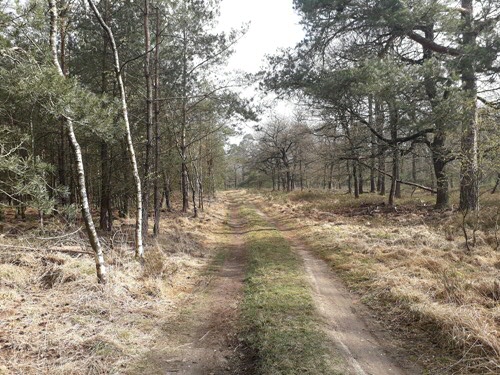Recreation decreases density of ticks near paths
It isn’t just the wolf: humans too are responsible for creating a ‘landscape of fear’ in nature areas. Deer, for example, avoid paths that are used for recreation. As a consequence, the density of ticks in the proximity of these paths has been found to be 72% lower than in quiet areas void of recreation. This was discovered by UG PhD student and ecologist Bjorn Mols.
Bjorn Mols recently published his findings in the academic journal Science of the Total Environment.
Behaviour of deer
Mols: ‘We know that humans have a strong effect on the behaviour of deer without even knowing it, simply by being present. We previously demonstrated that this, in turn, influences landscape-forming processes such as forest development. In this new study, we have shown that yet other ecological interactions are affected by this.
Fewer ticks
We discovered that due to the recreational use of paths, fewer deer are seen in the proximity—up to 20 metres—of these paths. This leads to a drastic decrease (by 72%) in the number of ticks near paths, and therefore also in the risk of people getting bitten by ticks. This is a key finding, as diseases transferred by ticks pose an increasingly great threat to public health.’

Modern nature management
Chris Smit, associate professor at the Groningen Institute for Evolutionary Life Sciences (GELIFES) at the UG and the fellow author of the article, elaborates: ‘Our findings are also relevant for the new approach to nature management: to use human activity in guiding ecological processes.
Picnic areas
It is interesting to see how our results can be applied in modern nature management to control the density of ticks—and, therefore, the risk of disease among recreational users. For example, we could consider laying well-used paths next to picnic areas or playgrounds. In this way, the smart planning of recreation could manage the risk of ticks and tick-borne diseases.’
Coronavirus
Infectious diseases pose an increasingly great threat to public health. Studies into the effects of recreation on ecological processes, in connection with diseases in particular, are thus currently extra relevant. This was also proved by the higher pressure posed by recreation on nature areas during the period of the coronavirus measures.
Publication
‘Recreation reduces tick density through fine-scale risk effects on deer space-use’ (2022). Authors: Bjorn Mols, Joe E. Churchill, Joris P. G. M. Cromsigt, Dries P. J. Kuijper, and Christian Smit. In Science of the Total Environment, 156222, 3 June 2022; https://authors.elsevier.com/a/1fB4FB8cculGk
More news
-
17 December 2025
Ben Feringa wins Feynman Prize
-
11 December 2025
Stormy planets and an unexpected atmosphere
